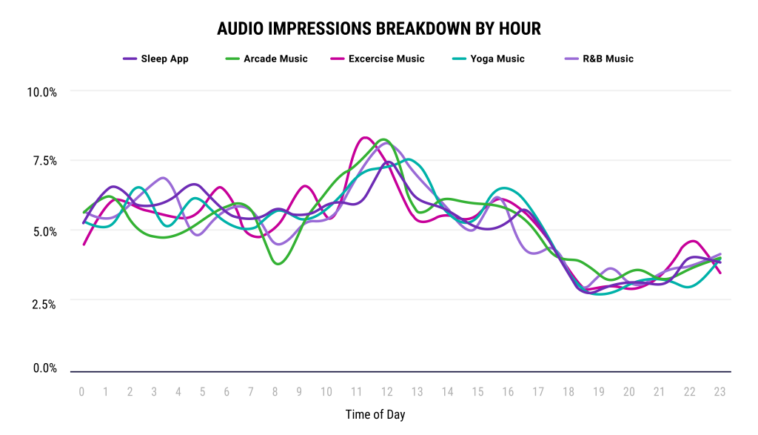As millions around the world rely on white noise apps to improve their sleep and relaxation, a sinister issue has emerged. Behind these apps’ soothing exterior lies an evolving and costly problem: a sophisticated ad fraud scheme siphoning millions of dollars from advertisers. Recent findings by DoubleVerify reveal that these seemingly harmless apps are exploiting advertisers on a massive scale, using fake impressions to misappropriate ad budgets intended for genuine user engagement.
White noise apps, beloved for their ability to mask disruptive sounds and promote a calm environment, have become mainstream. With thousands of five-star ratings, apps like “Deep Sleep” and “Deep Sleep Kids” have been downloaded tens of thousands of times. But while users rest, advertisers are being targeted. DoubleVerify’s recent analysis reveals that these popular apps—by faking high user activity during unnatural hours—have defrauded advertisers of hundreds of thousands of dollars each month, per app.
These apps are suspected of generating fake impressions for ads that are never played to real listeners. DoubleVerify’s conservative estimates place the cost of this fraud at about $225,000 per app monthly. Over the past two years, numerous apps have been identified as fraudulent, with estimated audio CPM rates ranging conservatively from $5 to $7, while several charge upwards of $20. Given the number of white noise apps implicated, the total financial impact is staggering.
The fraudulent operation hinges on server-side ad insertion (SSAI) fraud, which has previously been seen in Connected TV (CTV) scams. By deploying SSAI techniques, these apps simulate user engagement through artificial impressions, making it appear as though ads are being played to active listeners. This deception is achieved by manipulating metrics on dedicated servers, creating a facade of legitimate streaming activity.

One way to identify such fraudulent activity is through usage patterns. Legitimate white noise apps typically see peak activity during nighttime, while fraudulent ones show spikes in ad impressions during the day—times when real users wouldn’t normally be streaming sleep-inducing sounds. This misalignment in usage hours stands out as a red flag, especially when compared to other relaxation apps like yoga or exercise music that would not have identical traffic surges at the same times.
White noise app fraud is just one element of a broader trend in audio ad fraud. In the past year alone, DoubleVerify identified two significant schemes, “BeatSting” and “FM Scam,” which falsified audio traffic through server-based tricks to fool ad exchanges and networks. At their peak, these scams cost advertisers over a million dollars monthly by creating the illusion of active user engagement on streaming platforms, all while real ads were never shown. Bot-based fraud on audio platforms has surged, with DoubleVerify reporting a 269% rise in unique bot variants in 2023 alone. This widespread problem is now a major contributor to the 58% rise in streaming fraud schemes from the previous year.
Identifying fraud in the audio streaming industry is notoriously difficult, given that white noise apps appear harmless on the surface. Fraudsters use methods like spoofing residential IP addresses and setting up counterfeit SSAI servers to mimic genuine streaming activity. These tactics mislead ad platforms, SSPs, and networks into believing they’re reaching legitimate audiences, leading advertisers to spend vast sums on non-existent viewers. To detect these schemes, DoubleVerify employs machine learning alongside manual review to identify irregularities, such as identical user spikes across unrelated apps like R&B music, arcade sounds, and sleep noise. These simultaneous peaks suggest traffic generated by bots, not human listeners.
For advertisers, the implications of this fraud are significant. Ad dollars intended for legitimate content are wasted on fraudulent impressions, inflating marketing costs while draining resources from genuine streaming channels. Additionally, the undetected fraud diverts funds away from honest app developers and risks eroding trust in audio streaming.
The rise in fraudulent white noise apps has highlighted the pressing need for advertisers to adopt rigorous verification tools. By actively monitoring and verifying audio impressions, brands can better protect their investments, ensuring their ad spend reaches real users rather than bots. DoubleVerify’s Fraud Lab, which has identified thousands of deceptive apps across platforms, continues to spearhead these efforts, offering advertisers the tools to detect and mitigate the impact of ad fraud.







Comments
Loading…